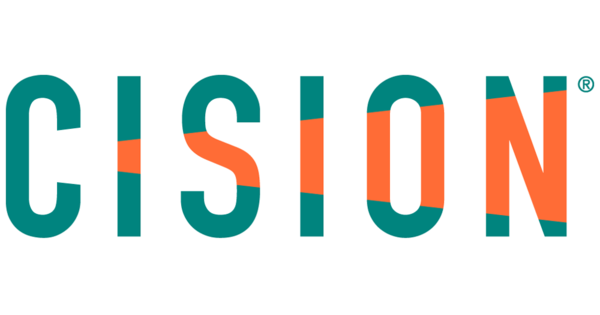Avicanna Announces Commencement of Clinical Trials for Derma-Cosmetics
/NOT FOR DISTRIBUTION TO UNITED STATES NEWSWIRE SERVICES OR FOR DISSEMINATION IN THE UNITED STATES. ANY FAILURE TO COMPLY WITH THIS RESTRICTION MAY CONSTITUTE A VIOLATION OF UNITED STATES SECURITIES LAWS/
TORONTO, July 24, 2019 /CNW/ – Avicanna Inc. (“Avicanna” or the “Company“) a biopharmaceutical company focused on the development, manufacturing and commercialization of plant-derived cannabinoid-based products, is pleased to announce the commencement of phase I clinical trials on three of its derma-cosmetic products.
Centro de Atención e Investigación Médica CAIMED S.A.S. (“CAIMED“) has commenced clinical studies on Avicanna’s Pura Earth™ derma-cosmetics products in order to demonstrate their effectiveness with specific cosmetic endpoints, such as reduction of fine lines associated with aging, efficacy as a moisturizer for eczema prone skin, and reduction of sebum and redness attributed to acne. In connection with such clinical studies, CAIMED is currently in the process of recruitment for the Company’s intensive conditioner trial for eczema prone skin and expects recruitment for the clear skin and regenerative serum trials to begin in August, with a total of 54 patients expected to be recruited per trial. Once applications have been administered to patients, the trials for clear skin and intensive conditioner are expected to last four weeks with the trial for the regenerative serum expected to last eight weeks. The studies are being completed in Colombia and results are expected to be available prior to commercial launch during the fourth quarter of 2019. Additionally, the Company is unaware of any other trials on https://clinicaltrials.gov involving cannabinoids in Colombiaor on derma-cosmetics containing cannabinoids in the world.
“At CAIMED we are very excited and proud of leading the medical cannabis clinical research with Avicanna´s dermatology and cosmetic products. The studies have been designed and are being developed with the highest standards in order to build strong evidence in this new challenging heath care opportunity” said Humberto Reynales, Executive Director of CAIMED.
Dr. Amza Ali, Chief Medical Officer of Avicanna added “These trials in topical derma-cosmetics represent Avicanna’s strong commitment to evidence-based best practice generated through our overarching model of rigorous scientific R&D, with the ultimate objective of providing safe and truly efficacious cannabinoid-based products.”
About Pura Earth™
Pura Earth™ is Avicanna’s derma-cosmetic line which utilizes a combination of purified cannabidiol (CBD) and other synergistic botanical ingredients designed to naturally regulate and nourish the skin. The Pura Earth™ products are formulated with purified CBD extracted from Cannabis plants cultivated under organic and sustainable conditions by Avicanna’s subsidiary, Santa Marta Golden Hemp S.A.S., which is located in Santa Marta, Colombia in the foothills of the Sierra Nevada Mountains. The Pura Earth™ product line was designed by Avicanna and optimized in partnership with the University of Toronto using Avicanna’s proprietary formulations. The Pura Earth™ product line will be manufactured by Altea Farmaceutica S.A. (“Altea“) under Good Manufacturing Practices standards. Avicanna has completed the technical transfer of all Pura Earth™ products to be manufactured by Altea and Altea has commenced production for both testing and commercial scale production purposes. Avicanna has entered into an agreement with Percos S.A. (“Percos“) pursuant to which it has appointed Percos as the exclusive distributor of Pura Earth™ derma-cosmetics products in Colombia, subject to certain minimum sales volumes and the Company anticipates that its Pura Earth™ derma-cosmetics products will be on the market before the end of 2019. Once the clinical studies have been completed Avicanna intends to investigate additional markets where CBD cosmetics are permitted both through retail and Avicanna’s own e-commerce platform.
About CAIMED
CAIMED is a provider of health solutions based on data science, information and knowledge management. CAIMED also provides contract research and site management organization services to the life sciences industry in Latin America. CAIMED was founded in 2007 in Colombia and has included more than 20,000 subjects in clinical studies in multiple therapeutic areas. Powered by MetricsMed™, CAIMED offers unique software technology for efficient management of clinical research operations for sites and ethics review committees.
About Avicanna
Avicanna is an Ontario corporation focused on the development, manufacturing and commercialization of plant-derived cannabinoid-based products through its two main business segments, cultivation and research and development.
Avicanna’s two majority-owned subsidiaries, Sativa Nativa S.A.S. and Santa Marta Golden Hemp S.A.S., both located in Santa Marta, Colombia are the base for Avicanna’s cultivation activities. These two companies are licensed to cultivate and process cannabis for the production of cannabis extracts and purified cannabinoids including cannabidiol (CBD) and tetrahydrocannabinol (THC).
Avicanna’s research and development business is primarily conducted out of Canada at its headquarters in the Johnson & Johnson Innovation Centre, JLABS @ Toronto. Avicanna’s scientific team develops products, and Avicanna has also engaged the services of researchers at the Leslie Dan Faculty of Pharmacy at the University of Toronto for the purpose of optimizing and improving upon its products.
Avicanna’s research and development and cultivation activities are focused on the development of its key products, including plant-derived cannabinoid pharmaceuticals, phyto-therapeutics, derma-cosmetics and Extracts (defined as plant-derived cannabinoid extracts and purified cannabinoids, including distillates and isolates), with a goal of eventually having these products manufactured and distributed through various markets.
Cautionary Note Regarding Forward-Looking Information and Statements
This press release contains certain “forward-looking information” within the meaning of applicable Canadian securities legislation and may also contain statements that may constitute “forward-looking statements” within the meaning of the safe harbor provisions of the United States Private Securities Litigation Reform Act of 1995. Such forward-looking information and forward-looking statements are not representative of historical facts or information or current condition, but instead represent only Avicanna’s beliefs regarding future events, plans or objectives, many of which, by their nature, are inherently uncertain and outside of Avicanna’s control. Generally, such forward-looking information or forward-looking statements can be identified by the use of forward-looking terminology such as “plans”, “expects” or “does not expect”, “is expected”, “budget”, “scheduled”, “estimates”, “forecasts”, “intends”, “anticipates” or “does not anticipate”, or “believes”, or variations of such words and phrases or may contain statements that certain actions, events or results “may”, “could”, “would”, “might” or “will be taken”, “will continue”, “will occur” or “will be achieved”. The forward-looking information and forward-looking statements contained herein may include, but is not limited to, the expected timing required to complete clinical trials, the expected timing to commence recruitment, the expected timing to complete recruitment, the expected number of patients, the intention of the Company to explore additional markets and the commencement of production of the derma-cosmetic products.
By identifying such information and statements in this manner, Avicanna is alerting the reader that such information and statements are subject to known and unknown risks, uncertainties and other factors that may cause the actual results, level of activity, performance or achievements of Avicanna to be materially different from those expressed or implied by such information and statements. In addition, in connection with the forward-looking information and forward-looking statements contained in this press release, Avicanna has made certain assumptions.
Among others, the key factors that could cause actual results to differ materially from those projected in the forward-looking information and statements are the following: decreases in the prevailing prices for cannabis and cannabis products in the markets in which the Company operates; adverse changes in applicable laws; adverse changes in the application or enforcement of current laws, including those related to taxation; increasing costs of compliance with extensive government regulation; changes in general economic, business and political conditions, including changes in the financial markets and in particular in the ability of the Company to raise debt and equity capital in the amounts and at the costs that it expects; risks related to licensing, including the ability to obtain the requisite licenses or renew existing licenses for the Company’s proposed operations; dependence upon third party service providers, skilled labor and other key inputs; risks inherent in the agricultural and retail business; intellectual property risks; risks related to litigation; dependence upon senior management; and the other risks disclosed in the Company’s long form final prospectus dated July 8, 2019. Should one or more of these risks, uncertainties or other factors materialize, or should assumptions underlying the forward-looking information or statements prove incorrect, actual results may vary materially from those described herein as intended, planned, anticipated, believed, estimated or expected.
Although Avicanna believes that the assumptions and factors used in preparing, and the expectations contained in, the forward-looking information and statements are reasonable, undue reliance should not be placed on such information and statements, and no assurance or guarantee can be given that such forward-looking information and statements will prove to be accurate, as actual results and future events could differ materially from those anticipated in such information and statements. Key assumptions used herein are that there will not be any unforeseen delays in the completion of the clinical trials being conducted by CAIMED, CAIMED will be able to find suitable participants in a timely manner and there will not be any unforeseen delays in the manufacture, for commercial production, of the Company’s derma-cosmetic product line. The forward-looking information and forward-looking statements contained in this press release are made as of the date of this press release, and Avicanna does not undertake to update any forward-looking information and/or forward-looking statements that are contained or referenced herein, except in accordance with applicable securities laws. All subsequent written and oral forward-looking information and statements attributable to Avicanna or persons acting on its behalf is expressly qualified in its entirety by this notice.
SOURCE Avicanna Inc.

For further information: about Avicanna, visit www.avicanna.com, call 1-647-243-5283, or contact Setu Purohit, President by email info@avicanna.com.
Stay Connected
SOURCE Avicanna Inc.












